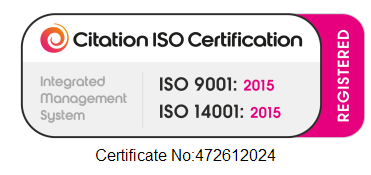One of the UK’s first AUTHORIZED STARLINK™ INSTALLERS.

In most rural areas, dealing with poor landline service is a common issue. Traditional providers often don’t cut it, prompting a look towards alternatives like VoIP (Voice over Internet Protocol), especially with Starlink satellite internet emerging as a viable option.
This raises key questions: Can You Use VoIP with Starlink? Is VoIP a reliable landline replacement in rural settings, particularly with Starlink? This article aims to explore these questions, leaning on the experiences of those who’ve made the switch.
VoIP is a method to make phone calls over the internet instead of using traditional phone lines. Imagine using your internet connection to talk to someone on the phone. This technology often saves money and offers more features than regular phone services.
For VoIP to function optimally, it requires stable internet with adequate bandwidth, low latency, and minimal jitter.
With the rapid development of Starlink, it offers fast internet speeds of over 100 Mbps and low delay times, often better than traditional broadband. This makes Starlink a strong option for internet phone calls (VoIP). But the question is, does it tick all the boxes needed for VoIP?
The short answer is YES. Here are some of the factors that make Starlink the ideal choice for using VoIP:
Starlink offers download speeds ranging from 100 Mbps to 200 Mbps and upload speeds of 10 Mbps to 20 Mbps.
Considering VoIP calls require just about 100 Kbps (0.1 Mbps) for a high-quality call, Starlink’s bandwidth far exceeds VoIP necessities, providing more than enough capacity for clear and uninterrupted voice communications.
Starlink’s latency has been reported to average between 20ms to 40ms, a significant improvement over the initial figures at the start of its deployment. This performance is on par with or better than traditional broadband services, which typically offer latency rates of 10ms to 50ms.
Such low latency is crucial for VoIP, as it ensures voice data is transmitted almost in real time, minimizing delays in conversation.
Starlink’s network is designed to keep jitter below 30 milliseconds and packet loss under 1%, thresholds that are considered acceptable for quality VoIP communication.
These figures indicate Starlink’s robust network infrastructure, which employs advanced technologies to minimize fluctuations in signal transmission, ensuring stable and clear VoIP calls even in adverse conditions.
Feedback from users who have tested VoIP over Starlink is overwhelmingly positive. Many report significant improvements in call quality and reliability over traditional internet services, particularly in remote locations where options were previously limited.
In a Reddit post, one user shared that despite disruptions during extreme winds and storms, its overall performance is pleasurable with the 42 connected wireless devices and 16 nest cameras.
One user also commented that they ditched the traditional landline for VoIP from 8×8 on a Polycom phone for business and had a better calling experience.
VoIP over Starlink presents a promising solution for reliable, high-quality communication, especially in underserved areas. While there are technical hurdles to overcome, the potential benefits outweigh the challenges. As Starlink continues to evolve, it could play a crucial role in making VoIP an even more accessible and reliable communication option worldwide.
For those interested in exploring VoIP on Starlink further, you may reach out to Spacelink Installations here. We are more than happy to help individuals and businesses adopt VoIP over Starlink’s innovative satellite internet service.

Let's get you online!
Fill in your details and we'll be in touch shortly.

Please fill in your details
Head Office:
11 Old Steine, Brighton, BN1 1EJ

© 2025 All Rights Reserved.